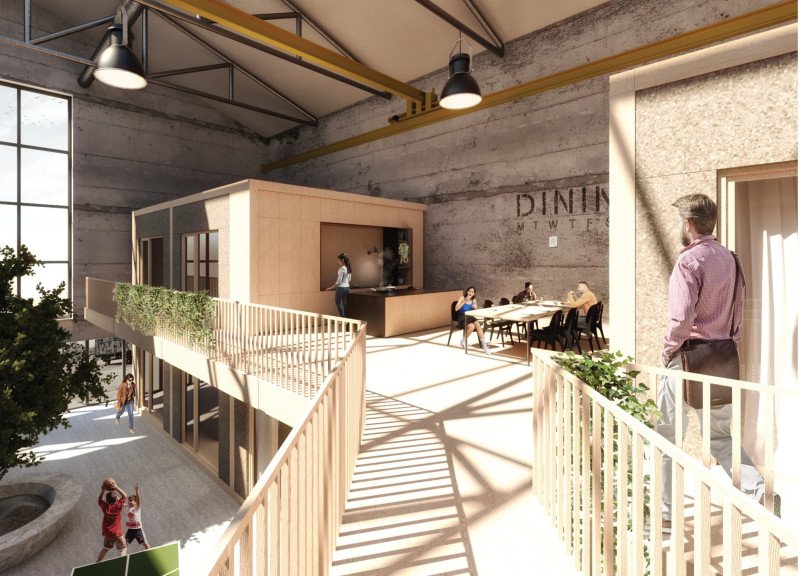5 key facts about this project
The design focuses on addressing urban housing shortages through the legal squatting of vacant buildings. Situated in often crowded city centers, the project aims to turn unused structures, referred to as "shells," into livable environments. By offering affordable housing solutions, it responds to the needs of those who struggle to find homes in expensive metropolitan areas.
Functionality
The concept revolves around repurposing a variety of building types. These include warehouses, office spaces, industrial sites, parking garages, shopping centers, and even places of worship. Each type provides potential for transformation into residential units. Modular living spaces can be integrated into these shells, allowing for quick reconfiguration to suit the needs of different communities.
Community Engagement
A key aspect of the design is the creation of communal spaces that encourage social interaction. These shared areas are designed for activities such as reading, gardening, and studying, allowing residents to connect with one another. This focus on community helps build relationships among inhabitants, which enhances the overall living experience in these transformed environments.
Sustainability
Sustainability plays an important role in the project. While specific materials are not heavily detailed, the design promotes energy efficiency and water management practices. This approach aims to reduce the ecological impact of the living spaces. By incorporating sustainable features, the design aligns with growing trends in urban planning that prioritize environmental stewardship.
Housing Accessibility
The initiative tackles the issue of housing accessibility by providing affordable options close to city centers. This proximity allows residents to easily reach jobs and services. By revitalizing previously neglected buildings, the project breathes new life into urban areas, encouraging activity and vibrancy, especially during evening hours.
Natural light is an essential element in the design. Strategically placed windows allow sunlight to enter the deep spaces of these repurposed buildings, creating inviting homes while maintaining the original character of the shells.


























